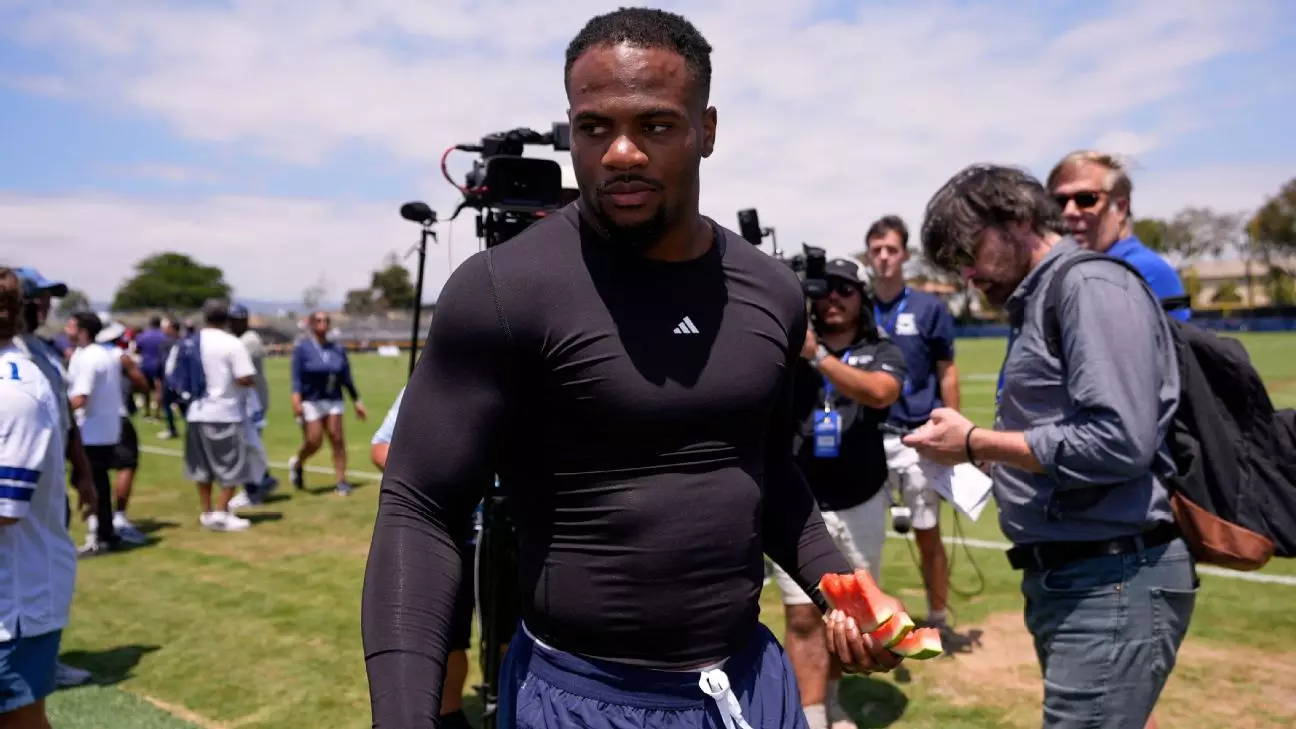In the high-octane world of professional football, contracts are more than mere pieces of paper—they are symbols of value, trust, and mutual commitment. Yet, beneath the surface of shimmering guarantees and soaring guarantees lie complex negotiations driven by ego, strategy, and sometimes, miscommunication. The recent showdown between Dallas Cowboys’ owner Jerry Jones and star linebacker Micah Parsons exemplifies how disputes over contracts are often less about money and more about perception, leverage, and leadership.
Jones’s assertion that he had a verbal agreement with Parsons, claiming it would make the former the highest-paid non-quarterback in NFL history, reveals a desire to project confidence and control. However, contractual negotiations are rarely settled with a handshake or a spoken promise—especially when powerful agents and strategic considerations are involved. The fact that Jones blames Parsons’s agent, David Mulugheta, for the impasse underscores how negotiations are entwined with perceptions of fairness, loyalty, and authority. When negotiations stall or deteriorate, it’s tempting for owners and players to attribute blame externally, but this often distracts from the deeper dynamics at play.
The idea that a deal was “agreed upon” by Jones and Parsons, only to be thwarted by external factors, showcases an optimistic version of negotiation that ignores the reality: that contracts are living documents shaped by ongoing dialogue, market conditions, and individual priorities. In truth, the negotiation process is iterative and fraught with tension—what appears as certainty from the outside may mask internal disagreements or strategic delays.
The Power Dynamics and Hierarchies Within the NFL
Jones’s comments reveal a clear hierarchy: the owner manages the financial assets, while the player performs the athletic feat that justifies the expenditure. He emphasizes that at some point, “somebody has to have the say,” implying that authority rests with the owner—an assertion that reflects the traditional power structure in the NFL. This view, however, oversimplifies a more nuanced reality: successful negotiations require mutual respect and understanding, not just unilateral authority.
Jones’s analogy of who “writes the check” and who “plays the game” ignores the fact that players like Parsons are indispensable assets, whose market value extends beyond their on-field performance. By framing negotiations around contractual obligations and guaranteed money, Jones diminishes the agency and bargaining power of Parsons. Yet, Parsons’s public trade request underscores his dissatisfaction—not merely about money but about leadership, recognition, and respect.
It is telling that Jones is willing to negotiate and “give more guaranteed money than anyone ever has”—a testament to recognition of Parsons’s potential. However, his readiness to let Parsons play on the fifth-year option and consider future franchise tags suggests a recognition of the fragile balance between player loyalty and organizational control. This dance of withholding and granting reflects the leverage each side holds at different stages of the contract lifecycle.
The Clash Between Trust and Negotiation Strategies
The shifting narratives—Jones’s claim of an agreement versus the reality of stalled negotiations—highlight how trust is often the first casualty in professional sports contracts. Jones states that Parsons’s agent “told us to stick it up our ass,” exposing deep-seated frustrations, which reveal how negotiations can devolve into personal conflicts rather than collaborative efforts.
Yet, Jones’s confidence that the deal is “resolved in his mind” indicates an unwavering belief in his position, possibly masking underlying doubts or risks. His comparison to Dak Prescott’s negotiations underscores a commitment to handling contractual disputes through a crafted blend of patience, strategic leverage, and precedent-setting moves like franchise tags.
However, the strategy of delaying full negotiations—letting the player showcase his talents for a season on the cheap—can backfire. It risks alienating a core player and destabilizing team chemistry. Fans and media often interpret these sagas as battles of principle, but for the management, they are strategic plays designed to control costs and set organizational standards. For Parsons, whose talent is undeniable, this ongoing standoff may ultimately serve as a test of his value versus organizational authority.
Leadership, Loyalty, and the Real Cost of Negotiation
Ultimately, the underlying tension in this contract battle comes down to leadership and respect. Jones’s belief that “Micah’s got to do the playing” and that “the attorney or agent works for Micah” simplifies a broader truth: in the NFL, lasting greatness depends on more than just talent—it hinges on mutual respect, trust, and shared vision.
Jones’s focus on the “costly” nature of unresolved negotiations reveals a mindset rooted in financial pragmatism rather than player empowerment. Yet, history shows that star players who feel undervalued often become dissatisfied, leading to diminished performance, public disputes, or even premature departures.
The true power of negotiations lies in the ability to balance organizational needs with individual aspirations. The Cowboys’s ongoing saga with Parsons exemplifies how leadership must adapt, listen, and sometimes, concede. In the end, a contract is more than guaranteed money; it is the foundation of trust, loyalty, and shared success—a lesson every NFL franchise must learn if they wish to build truly formidable teams.


Leave a Reply